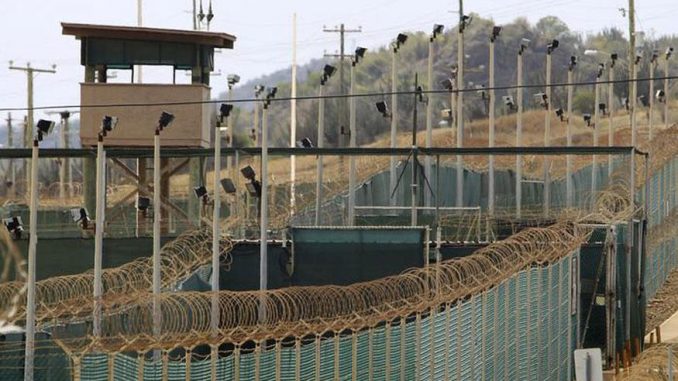
Guantanamo Bay Naval Base: They spent seven years locked up under George W. Bush, then eight more under Barack Obama — yet the five alleged terrorist plotters were convicted of nothing. Now, the so-called “9/11 Five” are starting the next phase of their Guantanamo Bay legal odyssey under the presidency of Donald Trump. Accused of plotting the September 11, 2001 attacks, the men are due in a military courtroom Wednesday, the first time the secretive tribunal has been in session since Trump was sworn in less than a week ago.
Renewed focus is on the military prison and the glacial legal process after Trump famously vowed while campaigning that he would load Guantanamo with “bad dudes,” and said it would be “fine” if US terror suspects were sent there for trial. It’s been nine years since the United States first charged the 9/11 Five with plotting the September 11 attacks and killing nearly 3,000 people. A multitude of procedural and legal problems, exacerbated by the logistical challenge of hosting a court in Guantanamo, have slowed the case to a crawl.
“We are just as determined as ever to try these individuals under the rule of law,” lead prosecutor Brigadier General Mark Martins said.
“We will do that — however long it takes.”
The general said the government will be ready to begin jury selection in March 2018, but defense lawyers scoff at the idea, saying 2020 is more realistic.
The defendants are alleged mastermind Khalid Sheikh Mohammed, Walid bin Attash, Ramzi Binalshibh, Ali Abd al-Aziz Ali — Mohammed’s nephew — and Mustapha al-Hawsawi.
– ‘Don’t know what we don’t know’ –
One of Obama’s first acts as president was to issue an order to close Guantanamo’s jail, but he failed to do so in the face of Republican opposition and the reluctance of US allies to take in the detainees. The remaining prison population is now 41, down from 242 when he took office.
On Wednesday, military judge Colonel James Pohl will consider whether hearings can even happen during this session’s two allotted weeks. Bin Attash’s chief lawyer, Cheryl Bormann, broke her arm over the weekend, which prevented her from flying to the US naval base on the eastern tip of Cuba. Because it’s a death penalty case, each defendant has the right to a “learned counsel,” or capital expert, during every step of the process. Prosecutors want to crack on with the hearings if bin Attash waives his right for Bormann to be present, but defense teams worry doing so could set a precedent for future proceedings.
On Friday, a father whose son, granddaughter and daughter-in-law were killed aboard United Airlines Flight 175 when it was flown into the World Trade Center, is slated to give a recorded deposition. The government wants to create a permanent record of such testimony — the man is now in his 80s — for use during the sentencing phase at an eventual conviction. But if bin Attash declines to waive his right for counsel to be there, even that deposition could be nixed — causing yet another delay in a case that sometimes seems terminally bogged down.
Underpinning everything is the CIA’s handling of the 9/11 Five and other prisoners in the years following the September 11 attacks. Some evidence came through so-called “enhanced interrogation techniques,” which critics equate to torture. Agents deployed an array of measures including waterboarding, chronic sleep deprivation and force-feeding — either orally or anally.
Since the 9/11 Five were first charged in 2008, the taint of torture and of alleged wrongdoing — including claims the government spied on defense teams — soured proceedings.
An ongoing issue is the fact that much evidence remains classified in a government report on torture. Defense teams are infuriated they can’t see the report, and thus cannot fully understand what evidence the government has against their clients.
“We don’t know what we don’t know, and that’s the problem,” said Hawsawi’s defense attorney, Walter Ruiz.
Source www.news18.com


Be the first to comment